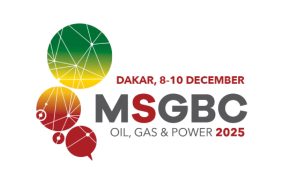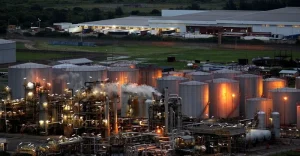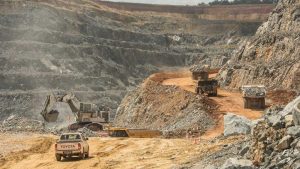Tailings are the residual byproducts of ore processing operations, typically comprising finely ground rock, process effluents, and residual chemicals. While often perceived as mere waste, tailings carry significant environmental and operational risk due to their potential for acid mine drainage (AMD), metal leaching, and structural failure of containment facilities.
Africa’s mining landscape is diverse, with extensive operations in copper, gold, platinum, and critical minerals. However, legacy infrastructure, limited regulatory enforcement, and underinvestment in tailings innovation have left the continent particularly vulnerable. Tailings management has evolved into a defining challenge for sustainable mining operations across the region.
The Chambishi Tailings Failure – Zambia’s Wake-Up Call
The 2024 Chambishi tailings dam collapse underscored systemic gaps in monitoring, risk assessment, and emergency preparedness. Investigations revealed inadequate seepage control, poor hydrological modeling, and a lack of independent auditing of tailings infrastructure. For professionals in the sector, the incident presents a case study in the consequences of regulatory lag and engineering neglect.
Other Notable Tailings Disasters on the Continent
The 1994 Merriespruit disaster in South Africa and artisanal gold mining incidents in Ghana have demonstrated that both industrial and informal mining operations must address the tailings threat. Inadequate stakeholder engagement and failure to adopt global best practices continue to plague many sites.
Why Traditional Tailings Management No Longer Works
Legacy Systems Are Failing
Historically, tailings dams in Africa were constructed using upstream methods—an approach increasingly viewed as unsafe under seismic and hydrological stress. Many facilities lack modern instrumentation, hazard zoning, or formal closure planning.
The Cost of Complacency
Beyond direct economic losses, tailings failures erode investor confidence, damage ESG scores, and expose operators to litigation. In a globalized economy where financiers and OEMs are ESG-conscious, poor tailings practices can cut access to capital markets.
Emerging Trends and Technologies in Tailings Innovation
Filtered Tailings (Dry Stack Tailings)
Dry stack tailings offer a safer, water-efficient alternative to conventional storage. By mechanically dewatering tailings, the material becomes stackable and geotechnically stable. Despite higher upfront costs, long-term O&M savings and reduced closure liabilities justify adoption. Operations in Namibia and Botswana are actively piloting this approach.
Paste and Thickened Tailings
Paste tailings, with a higher solids content and lower water footprint, reduce risk of liquefaction and erosion. The approach also facilitates underground backfilling, especially valuable in narrow-vein gold and platinum operations.
Real-Time Monitoring Systems
Geotechnical instrumentation such as piezometers, inclinometers, and automated total stations, combined with telemetry, enables continuous data acquisition. These systems are now being deployed in Ghana and South Africa to track phreatic surfaces, wall movement, and seismic activity in real time.
Digitization and Automation in Tailings Storage Facilities
AI and IoT Integration
AI algorithms can now detect anomalies from sensor data, predict failure scenarios, and trigger alerts. Internet of Things (IoT) platforms aggregate data from disparate sources—hydrological, seismic, chemical—for integrated risk modeling.
Predictive Maintenance Through Data Analytics
Machine learning models, trained on historical performance and failure data, can identify early signs of slope instability or drainage blockages. Predictive models also inform capital planning and resource allocation for TSF upgrades.
Success Stories from South Africa’s Platinum Belt
Anglo American Platinum has adopted dry stack technology at its Mogalakwena mine, achieving a 40% reduction in water use and improving tailings density. Geotechnical audits and third-party compliance assessments are now routine.
Sylvania Platinum is dedicated to the responsible management of its Tailings Storage Facilities (“TSFs”) to prevent negative impacts on health, safety, the environment, and communities. TSFs are designed with an acceptable level of risk, fully compliant with the DMRE Mandatory Code of Practice for Mine Residue Deposits. Sylvania’s approach to tailings management prioritises zero harm, and the Company continues to align its approach with the recommendations and requirements of the Global Industry Standard on Tailings Management (“GISTM”).
Ghana’s Gold Mines Leveraging Smart Tailings Solutions
Newmont Goldcorp in Ghana employs satellite imagery and UAVs for structural assessments of tailings facilities. Machine vision systems detect surface cracks, erosion patterns, and vegetation encroachment, informing rehabilitation strategies.
Policy and Regulation Are Catching Up
The Global Industry Standard on Tailings Management (GISTM)
Developed by the ICMM, UNEP, and PRI, GISTM sets rigorous standards for governance, technical design, and emergency preparedness. Although voluntary, adoption signals a commitment to responsible mining and enhances investor trust.
African Government Responses and Gaps
South Africa has incorporated GISTM principles into the Mining Charter and MPRDA updates. Zambia is revising its Mines and Minerals Act to include tailings oversight. However, implementation capacity and enforcement mechanisms remain inconsistent.
The Role of ESG and Investor Pressure
Tailings Transparency as a Reputation Issue
Stakeholders increasingly demand disclosures on tailings inventory, classification, and risk. Transparent reporting frameworks aligned with GISTM and SASB criteria are becoming standard for listed mining firms.
ESG Ratings and Their Influence on African Mines
Firms with credible tailings management practices score higher on ESG indices, attracting institutional investment and lowering cost of capital. This is especially relevant in regions dependent on project finance.
The Financial Perspective
Cost-Benefit Analysis of Innovative Tailings Management
Though capital-intensive, innovations like filtered tailings and remote monitoring yield measurable ROI through improved operational continuity, lower insurance premiums, and reduced closure costs.
Who Pays and Who Profits?
Strategic partnerships with OEMs, donor-funded pilot programs, and green financing instruments can offset initial CAPEX. Operators benefit from risk reduction, resource recovery, and enhanced brand equity.
Community Impact and Inclusion
How Poor Tailings Practices Affect Local Communities
Failure in tailings containment often leads to displacement, water contamination, and loss of livelihoods. This fuels community unrest and license-to-operate challenges.
Indigenous Knowledge and Community-Led Monitoring
Programs in the DRC and Tanzania now integrate local communities into environmental monitoring, using participatory GIS and mobile reporting platforms to foster accountability.
Barriers to Innovation in Africa
Funding and Infrastructure Constraints
Remote mines often lack access to grid power or broadband connectivity—key enablers for modern tailings solutions. Multilateral investment and PPPs are critical to overcoming these barriers.
Technical Skills Gap
Africa’s shortage of geotechnical and tailings-specific engineers necessitates capacity-building through university programs, vocational training, and exchange partnerships.
Collaborations and Partnerships Driving Progress
International Players Working with African Mines
Collaborations with institutions like the World Bank, ICMM, and EIT RawMaterials provide technical support and co-financing for pilot projects across Africa.
The Importance of Local Innovation Hubs
Innovation ecosystems in Johannesburg, Accra, and Lusaka are incubating solutions like modular dewatering plants and low-cost sensor kits tailored for African conditions.
Sustainability and the Circular Economy Approach
Reprocessing Tailings for Mineral Recovery
Tailings reprocessing is gaining traction in South Africa and Zimbabwe, where historic dumps are rich in unrecovered metals. This approach minimizes waste and creates economic value.
Turning Waste into Wealth
Tailings can serve as raw material for bricks, road aggregate, or cement additives. Integrating waste valorization into mine planning is key to closing the loop.
The Future of Tailings in African Mining
Vision 2030: What’s Possible?
By 2030, Africa could see a landscape of digitally connected, fail-safe tailings storage facilities embedded with remote sensing, AI-driven monitoring, and community co-management models.
Creating a Safer, Greener Industry
The path forward demands an ecosystem approach—combining regulation, technology, financing, and inclusive governance. With the right alignment, tailings innovation can be Africa’s competitive advantage.
Tailings management is not a peripheral concern—it is central to operational resilience, community safety, and investor confidence. Technology that can extract metals and minerals from waste is very important but faces challenges such as understanding what the resources are, which can be difficult as resource models aren’t built for tailings but geology, and how to safely remove those tailings and process them. Africa’s mining industry stands at a crossroads. Embracing innovation in tailings storage and monitoring is not only a technical necessity but a strategic imperative for sustainable growth.







